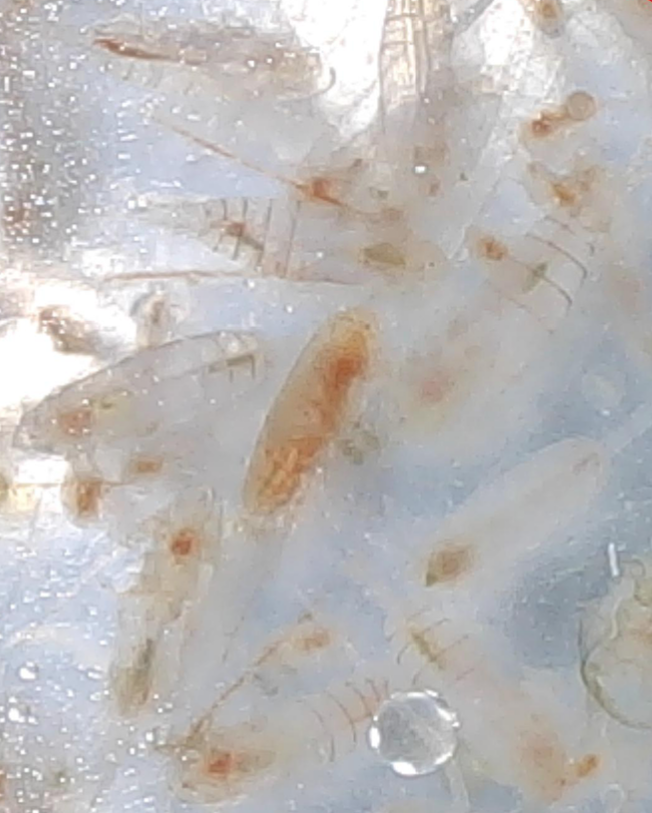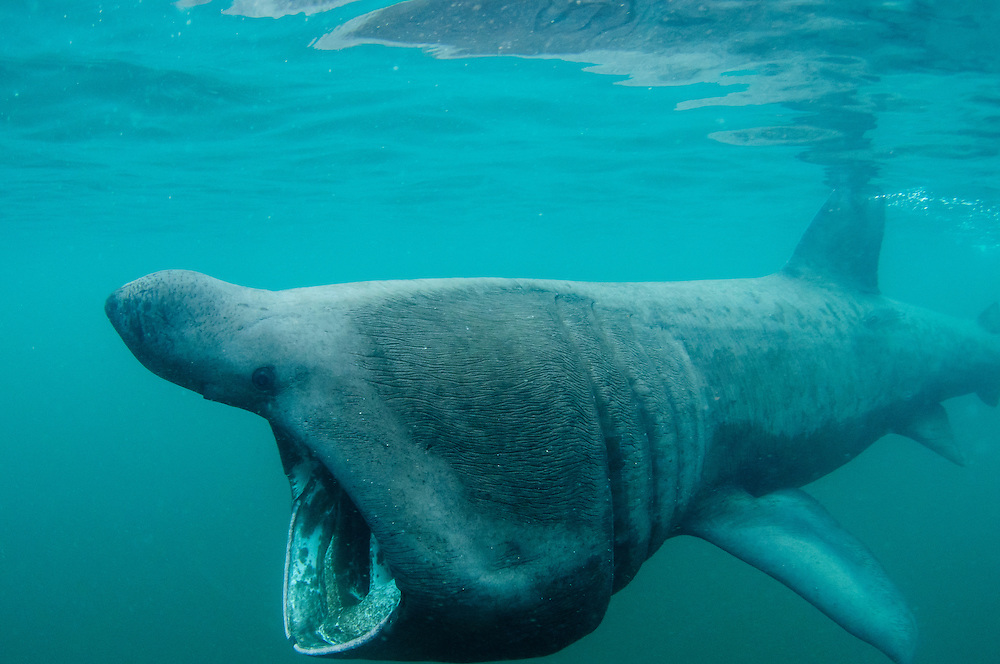
What do Basking Sharks Eat?
Jan 02 2024

What do basking sharks eat? Basking sharks eat a type of zooplankton which are small crustaceans called copepods. Generally there are two main species Calanus finmarchicus & Calanus helgolandicus.
In the vast and mysterious realms beneath the ocean’s surface, a gentle giant gracefully glides through the water, filtering its way to a satisfying meal. The basking shark (Cetorhinus maximus) is a captivating species that has intrigued marine enthusiasts and scientists alike. The 2nd largest fish in the sea, basking sharks are renowned for their unique feeding habits and the diverse menu that sustains these magnificent creatures.
The basking shark is a slow-moving filter feeder, characterised by its enormous size, with some individuals reaching lengths of up to 12 metres. Despite their massive appearance, these gentle giants are harmless to humans, as they primarily subsist on zooplankton.
Unlike predatory sharks that hunt actively, basking sharks are filter feeders, relying on a passive method to obtain their food. The basking shark’s feeding mechanism is a marvel of efficiency and simplicity. They swim with their mouths wide open, creating a large cavity that allows water to flow through. This method is called passive ram filtration. Specialised gill rakers, structures that resemble combs, filter out the tiny organisms present in the water, such as plankton, krill, and small fish.
The cornerstone of the basking shark’s diet is plankton, tiny organisms that drift with ocean currents. Plankton is a diverse group that includes both plant-like (phytoplankton) and animal-like (zooplankton) organisms. Basking sharks particularly favour copepods; a type of small crustacean that forms a significant portion of their diet.
Basking sharks exhibit seasonal migrations, often following the zooplanktonic blooms that occur in different regions. These migrations are synchronised with the availability of their primary food source, ensuring a bountiful supply of zooplankton during their travels. As these sharks move through nutrient-rich waters, they engage in continuous filter feeding, efficiently sieving the microscopic organisms that sustain them.
While zooplankton is the primary focus of the basking shark’s menu, they are known to also eat small fish, fish eggs, and invertebrates. Basking sharks range is across much of the globe and as such they will have slightly different diets in different areas. As a species, this adaptability allows them to exploit various food sources, contributing to their overall ecological resilience.
Despite their massive size and seemingly invincible presence, basking sharks face several threats, including habitat degradation, entanglement in fishing gear, and recovery from historical overfishing. Understanding their culinary preferences is crucial for developing effective conservation strategies to protect these gentle giants and the delicate marine ecosystems they inhabit. For example the range of Calanus is effected by sea temperature and with climate change a northerly shift has been observed. This may be effecting historical basking shark ranges as their main prey location is changing.




